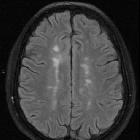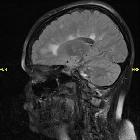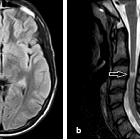Dawsonfinger
Dawson fingers are a radiographic feature of demyelination characterized by periventricular demyelinating plaques distributed along the axis of medullary veins, perpendicular to the body of the lateral ventricles and/or callosal junction. This is thought to reflect perivenular inflammation. They are a relatively specific sign for multiple sclerosis.
Radiographic features
MRI
- T1: low signal in chronic lesions; otherwise usually isointense to white matter
- T2/FLAIR: linear or ovoid high signal
- T1C+ (Gd): enhancement can be seen with active lesions
History and etymology
Dawson fingers are named after Scottish pathologist James Walker Dawson (1870-1927 ) who described the phenomenon on histopathological specimens in an article in 1916 , although the term "Dawson fingers" was brought forward by Charles Lumsden.
Siehe auch:
- Encephalomyelitis disseminata
- Subakute sklerosierende Panenzephalitis
- McDonald Diagnostic Criteria for MS
- Dawson Kriterien
und weiter:
 Assoziationen und Differentialdiagnosen zu Dawsonfinger:
Assoziationen und Differentialdiagnosen zu Dawsonfinger:













